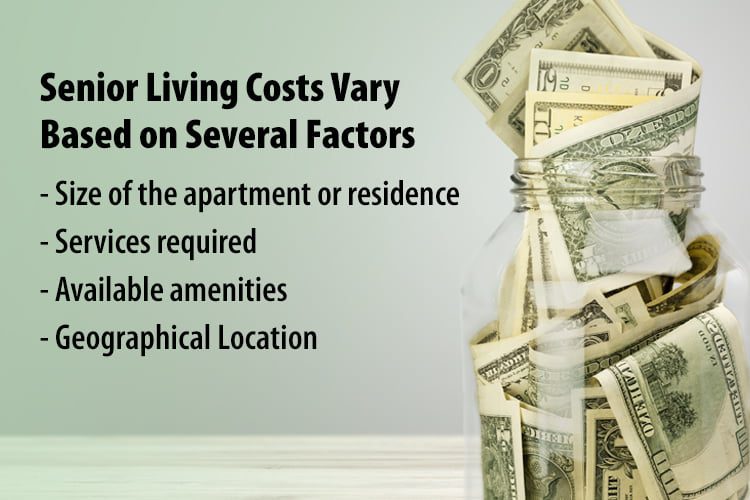Financing all levels of senior assisted living can be a daunting task as our loved ones age. Ensuring they receive the care they need becomes a top priority. In this guide, we’ll explore practical strategies for financing at all levels of senior care.
Understanding the Cost of Assisted Living
 Senior assisted living expenses can vary depending on several factors. Usually, the categories of expenses include accommodation, healthcare, and additional services. Accommodation costs cover the living space, utilities, and maintenance. Healthcare expenses encompass medical supervision, check-ups and appointments, and medication management. Additional services may include meal plans, housekeeping, transportation, and recreational activities.
Senior assisted living expenses can vary depending on several factors. Usually, the categories of expenses include accommodation, healthcare, and additional services. Accommodation costs cover the living space, utilities, and maintenance. Healthcare expenses encompass medical supervision, check-ups and appointments, and medication management. Additional services may include meal plans, housekeeping, transportation, and recreational activities.
It’s important to note that the costs can vary based on the level of care needed. For example, individuals requiring minimal assistance may have lower expenses than those who need more comprehensive memory care or rehabilitation. Understanding specific care needs is crucial, and is the first factor to look at when considering the variability and budget for senior assisted living.
Analyze the Scope of Care Needed
You or your loved ones should consult trusted healthcare professionals and advisors to determine living options that would best serve health and wellbeing needs. Like many communities, Sunny Vista has a variety of continuing care options that directly impact the type of accommodation needed, and thus, the variability of cost. The different levels include:
- Assisted Living
- Memory Care
- Long-term Care
- Rehabilitation
- Independent Living
Regardless of which option makes the most sense, it is important to research each one thoroughly to understand all that is included from amenities to meal plans, to health care and rehabilitation services provided. Pricing can vary greatly according to location, and the range of services and amenities needed and preferred.
Determining a full picture of the services and features that will be required of the living community will allow the right questions to be asked when researching different options and understanding the breakdown of expenses.
Funding Assisted Living
Research Assistance Programs
When researching funding options for assisted living, it’s important to explore assistance programs. There are several federal and state programs, as well as local community programs that could offer funding support based on varying levels of care needed.
Medicaid & Medicare
Medicare, which is jointly funded by the federal government and states, has flexibility dependent on location on how Medicaid dollars are allocated. In some instances there is a Medicaid waiver program, like the Elderly, Blind and Disabled Waiver (EBD) in Colorado, which allows individuals to receive care in assisted living communities. Though Medicare doesn’t typically cover long-term care, there is the possibility of it providing for short-term services, partial stays post-injury or surgery that requires rehabilitation, or other stipulations determined by the waiver. There are oftentimes several non-medicaid assistance programs available through the federal and state government for seniors to take part in based primarily on the levels of assistance they might need.
Veterans Aid & Attendance
Another option for certain individuals is to look into the benefits of Veterans Aid & Attendance, a program offered by the U.S. Department of Veterans Affairs, that provides financial assistance to eligible veterans and their spouses who require the aid of another person or are housebound. Aid & Attendance can be used to help cover the cost of assisted living, including room and board, personal care services, and medication management. There are certain eligibility criteria that must be met and applied for, but this is another option for qualified veterans and survivors to assess support to make assisted living more affordable and accessible.
Community-Specific Support
Ultimately, rates for assisted living of all levels vary by resident need and because of this, communities typically offer multiple pricing structures. For example, an all-inclusive structure would be a better deal for an individual requiring several services. On the other hand, a fee-for-fee pricing structure would allow for a more independent resident to choose only the services they need. Some communities might require monthly fees for certain enrichment opportunities. At Sunny Vista, the cost of assisted living includes a range of robust services and amenities such as daily living assistance, chef-prepared meals, a fitness center, a theater and more. Taking the time to have a conversation with each community of interest to discuss pricing structures and rates is crucial in finding an affordable and feasible option.
In addition to community-specific support, many nonprofit organizations, especially non-profit senior living communities, offer support specifically tailored for seniors in need. From grants to re-investment payments, there are usually several options to alleviate financial burden. By exploring senior centers, religious organizations, social service agencies and foundations, there may be programs or resources you or your loved one could utilize to make assisted living more financially feasible.
Explore Insurance, Savings, and Investments
 When seeking finance options for assisted living, individuals can leverage insurance, savings, and investments to help cover the costs. One crucial step is determining what their insurance policy covers, as some may include provisions for assisted living expenses. Those plans that include long-term care insurance (LTC) would help make some of the costs more affordable, and taking advantage of a hybrid policy or a life-settlement to pay for care could be a financial option worth considering.
When seeking finance options for assisted living, individuals can leverage insurance, savings, and investments to help cover the costs. One crucial step is determining what their insurance policy covers, as some may include provisions for assisted living expenses. Those plans that include long-term care insurance (LTC) would help make some of the costs more affordable, and taking advantage of a hybrid policy or a life-settlement to pay for care could be a financial option worth considering.
Working with a financial planner or trusted family member can help maximize the benefits of the right insurance plan. They can also assist in strategic planning to map out withdrawals from savings and investments that will ensure the funds are utilized effectively. By carefully assessing insurance coverage and collaborating with experts and family, individuals can make informed financial decisions to support their transition, no matter the level of assisted living is needed.
Home Equity Options & Family Support
Individuals seeking finance options for assisted living can consider home equity options and family support in several ways. Home equity loans, or reverse mortgages, allow seniors to tap into their home equity to access funds for senior care financing, which can provide a valuable source of financial support.
Additionally, open communication within the family about financing senior care is imperative. By discussing financial needs openly and honestly, family members can better understand the situation and explore solutions together that could include pooling savings or co-applying for bridge loans. Collective support from family can greatly contribute to financing if that is an option and further – it encourages a collaborative approach, ensuring that the best possible level of care and assisted living is provided.
In conclusion, financing senior assisted living demands careful consideration and strategic planning. By understanding the various avenues available, from government programs to personal savings and community resources, families can navigate this complex terrain with confidence. Proactive financial planning and seeking professional advice will empower individuals to provide the best possible care for their aging loved ones. The most important takeaway is to really evaluate the level of care required as that will play a role in not only the communities that might be most suitable, but also the financing opportunities available.




